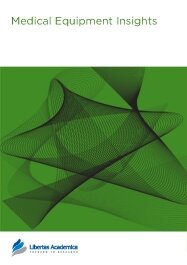

Publication Date: 16 Dec 2008
Journal: Medical Equipment Insights
Citation: Medical Equipment Insights 2008:1 9-13

Hiroaki Sato1, Michiaki Yamakage2, Katsumi Okuyama1, Yusuke Imai1, Hironobu Iwashita1, Taishi Masamune1, Tadahiko Ishimaya1 and Takashi Matsukawa1
1Department of Anesthesiology, University of Yamanashi, Faculty of Medicine, Chuo, Yamanashi, Japan. 2Department of Anesthesiology, Sapporo Medical University School of Medicine, Sapporo, Hokkaido, Japan.
Abstract
Nasopharyngeal temperature is allegedly accurate and is generally used during cardiopulmonary bypass for open-heart surgery. However, adequate depth from the anterior nares to measure nasopharyngeal temperature has not been evaluated. To test whether nasopharyngeal temperature is sufficiently accurate and precise for clinical use and to clarify the suitable depth of insertion, we compared nasopharyngeal temperature measurements to simultaneous tympanic temperature measurements during open-heart surgery with cardiopulmonary bypass. Subjects comprised 4 women and 6 men undergoing cardiac surgery with a target core temperature of 32 °C. Nasopharyngeal temperature was measured at 4 sites by placing thermocouples in the nasal cavity in 1-cm increments starting at 2 cm from the anterior nares. The reference temperature (tympanic temperature) was measured at the right tympanic membrane using a thermocouple. Both temperatures were measured every 5 min and compared using correlation coefficients of linear regression (r2) and bias (mean difference between the two methods). Compared to tympanic temperature, nasopharyngeal temperature showed regression slopes of 0.91–1.03 and correlation coefficients of 0.55–0.65 at all 4 depths. Accuracy (offset or bias) was 0.9–2.1 °C compared to tympanic temperature. Precision (standard deviation) of measurements was 0.8–1.2 °C. Nasopharyngeal temperature collected at 2 cm varied the most from tympanic temperature. In conclusion, the reliability of T Naso is low for monitoring core body temperature during open-heart surgery with CPB, particularly if the probe is placed at a shallow depth from the anterior nares. Nasopharyngeal temperature obtained closest to the anterior nares (2 cm) were the least accurate.
PDF (360.54 KB PDF FORMAT)
RIS citation (ENDNOTE, REFERENCE MANAGER, PROCITE, REFWORKS)
BibTex citation (BIBDESK, LATEX)

Publishing in Cancer Informatics was the fastest publication I have ever experienced and has received the highest viewing rate. So it is a great place to publish your very latest research.
Facebook Google+ Twitter
Pinterest Tumblr YouTube